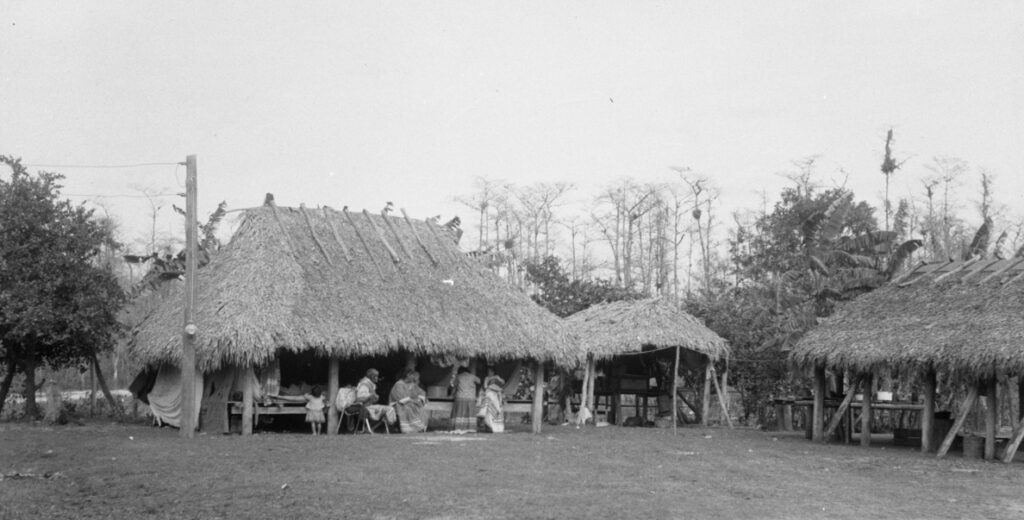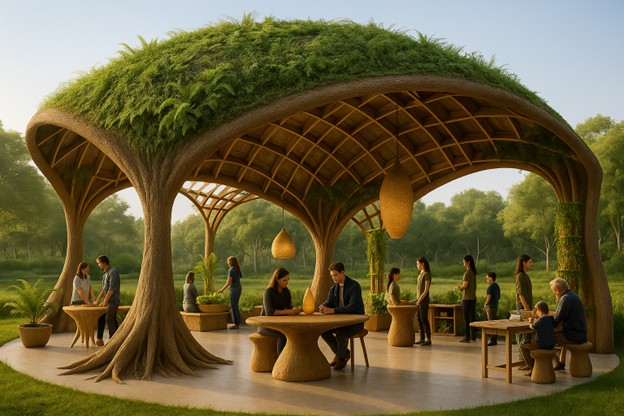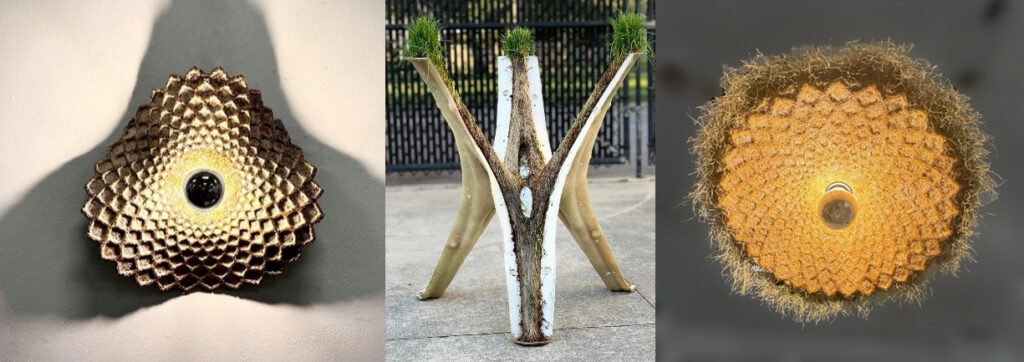This essay was written as part of a Ph.D. seminar called “Theorizing Infrastructure” for Florida Atlantic University’s graduate program in comparative studies. An overview of the course by professor Stacey Balkan and other essays from students can be found here.
By Hassan Pishahang
How can we rethink architecture in Florida’s fragile landscapes? What if, instead of building with extraction and permanence, we built with adaptability, care and respect for living systems?

This essay explores the Ah-Tah-Thi-Ki Structure, a speculative design project inspired by the Indigenous wisdom of the Seminole and Miccosukee tribes. Rooted in the ecological intelligence of the Everglades and the traditional chickee — a raised, open-air, thatched-roof shelter — the project reimagines infrastructure as something living, regenerative and deeply connected to place.
The Florida Everglades, often called a “River of Grass,” is one of North America’s most ecologically rich landscapes. For the Seminole and Miccosukee peoples, these wetlands are more than an ecosystem — they are a sanctuary, a place where cultural traditions and adaptive ways of life have thrived for generations.
After the upheaval of the 19th-century Seminole Wars, these communities withdrew into the heart of the Everglades, establishing family-based settlements on elevated hardwood hammocks, dry islands that remained above seasonal floodwaters. At the center of these settlements stood the chickee: a simple yet brilliant structure built from cypress and palmetto, perfectly adapted to the subtropical climate.
The chickee provided natural ventilation, flood protection and seasonal flexibility without damaging the landscape. But it was also a symbol — a marker of resilience, adaptability and cultural identity. This delicate balance, however, was disrupted in the early 20th century, when state-led drainage projects imposed canals, levees and roads across the Everglades to convert wetlands into farmland and real estate. These efforts severely altered the region’s hydrology, displaced Indigenous land practices and fueled environmental decline.

Despite these disruptions, the chickee endured. Today, its presence on tribal lands and in cultural preservation efforts demonstrates its ongoing relevance — not only as a historical structure but as an ecological lesson. In contrast to modern construction, which often depends on extractive, energy-intensive processes, the chickee’s renewable, biodegradable materials offer a climate-adaptive model for sustainable design.
Building on this insight, the Ah-Tah-Thi-Ki Structure envisions a new kind of infrastructure — one that grows, adapts and participates in the life of the land. Named after the Seminole phrase meaning “a place to learn, a place to remember,” the project proposes a pavilion whose components are cultivated on site rather than imported or manufactured. Working with living resources like mycelium, palmetto fibers and fast-growing plant roots, the design re-centers knowledge systems that have long been overlooked or displaced, using innovation not to erase the past but to repair and evolve it.
The pavilion takes its formal inspiration from the chickee but enhances it through contemporary tools. A roof of sustainably harvested palmetto fronds creates an open, breathable structure, allowing breezes and rainfall to shape the visitor experience. Inside, every piece is cultivated, not built: Mycolumina, a pendant light grown from mycelium, demonstrates the creative potential of living materials; Luma, a fiber-root lamp, takes shape in coral-inspired molds, casting a soft glow; Risheh, an organically grown root table, echoes the intricate branching systems found in nature. Together, these elements embody a biocentric design philosophy that challenges the industrial logic of extraction and embraces regenerative, ecologically attuned practices.

More than just architecture, the Ah-Tah-Thi-Ki Structure is a space for learning and co-creation. Open-air classrooms, growing labs and workshops invite artisans, youth and elders to collaborate with living materials, keeping cultural knowledge active and evolving. This is not a static display of indigenous traditions; it is a dynamic process, shaped by community participation and continuous renewal.
Visually, the structure rejects rigid symmetry and monumentality. It embraces asymmetry, openness and temporality, using roots, fronds and organic patterns as metaphors for adaptability and resilience. Each object becomes a living record of environmental interaction, a material memory of seasons, conditions and care.
In essence, the Ah-Tah-Thi-Ki Structure transforms a once-drained Florida site into a place of cultural and ecological renewal. By blending indigenous wisdom, regenerative materials and innovative design, it offers a hopeful model for future infrastructure — one based not on permanence and domination but on co-evolution, stewardship and reciprocal relationships with the land.
This project is not nostalgic fantasy, nor is it speculative utopia. It is practical, grounded resistance — an attempt to seed an architectural future that grows forward with intention, adaptability and care.
Banner image: Another conceptual image of the Ah-Tah-Thi-Ki Structure generated using ChatGPT’s image generation tools.
Sign up for The Invading Sea newsletter by visiting here. To support The Invading Sea, click here to make a donation. If you are interested in submitting an opinion piece to The Invading Sea, email Editor Nathan Crabbe at nc*****@*au.edu.




lovely – would enjoy sitting here.